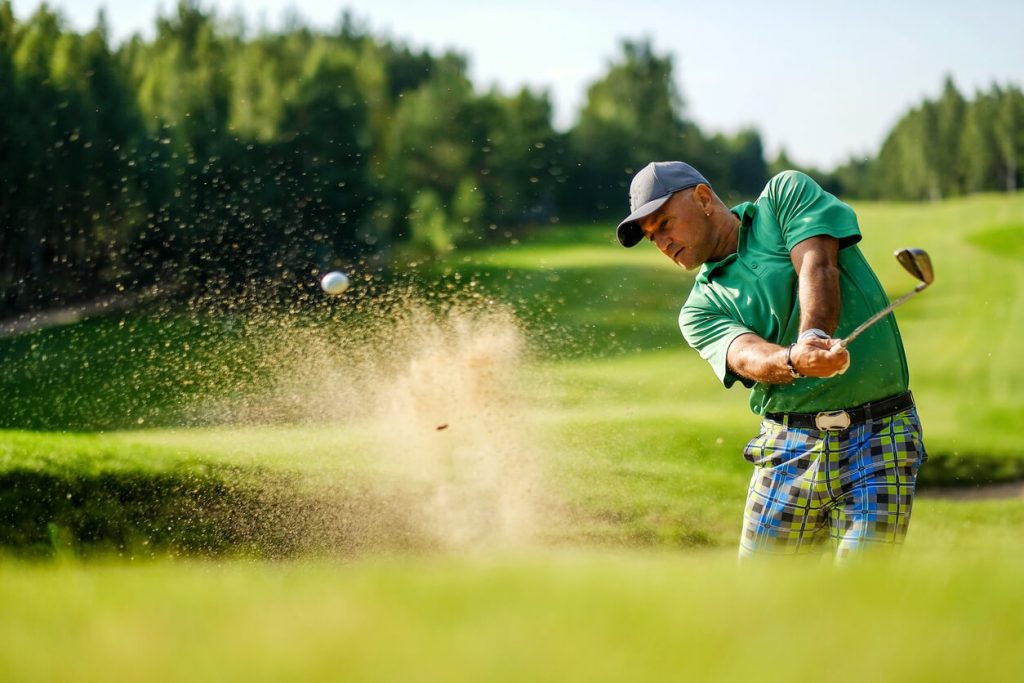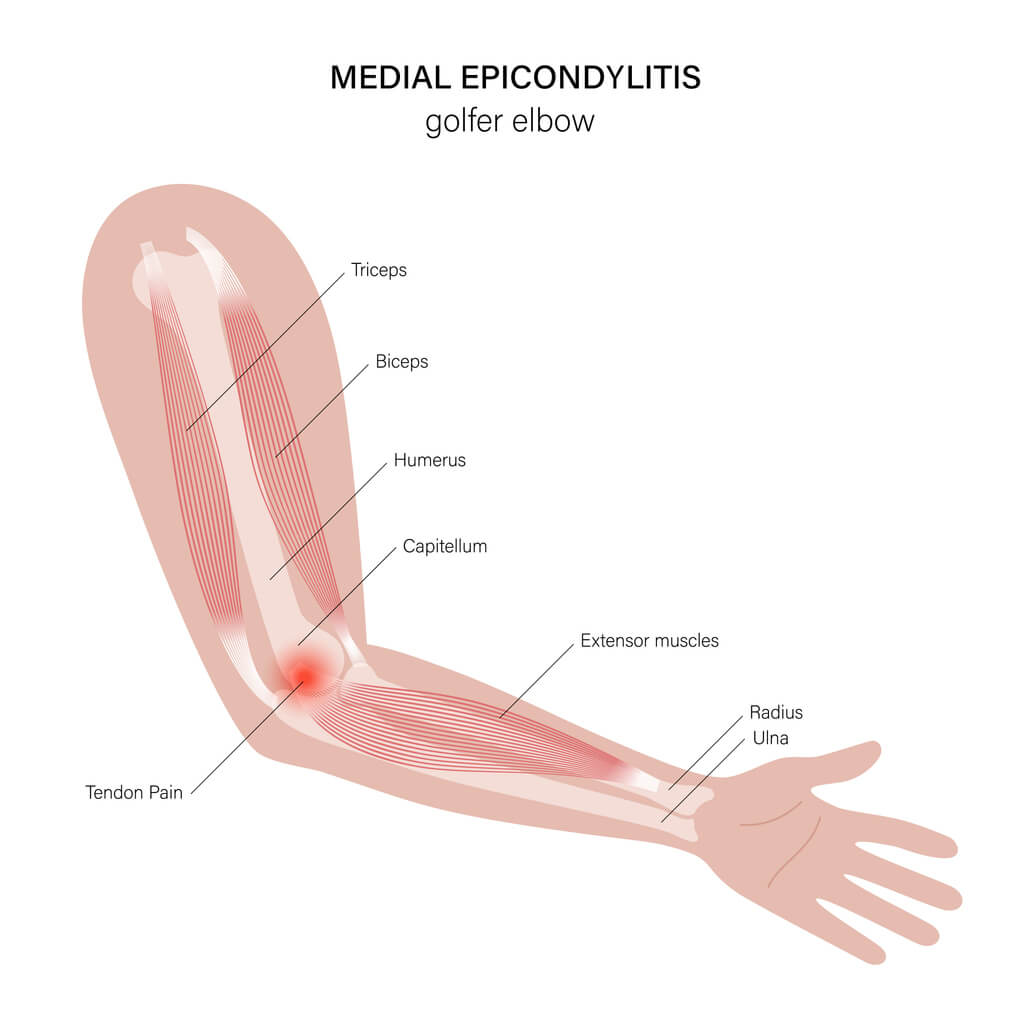The most common golf injuries and how to prevent them

Golf is a repetitive, physical sport
that puts a lot of strain on the body. Like in any sport, golf injuries are
common.
While a golfer may not have to worry about breaking their leg as much as, say, a footballer might, there are still a range of common golf injuries for golfers to consider and try to avoid.
In this blog, golf fitness instructor Jamie Greaves explains some of the most common golf injuries, why you might be getting them, and how best to avoid them in the future.
The most common golf injuries
Jamie said:
Around 80% of golf injuries stem
from what we call overuse. Regardless of which part of the body
gets injured, the root cause is always very similar. Golfers make the same
motion over and over again, which places stress on the body.
It’s almost like an equation. On one
side, you’ve got the demands on your body, such as how many swings you’re
making and how many rounds you’re playing. On the other side, you’ve got your capacity—i.e.,
what your body can handle.
Overuse injuries normally occur when this equation becomes out of whack, where demands on the body exceed your body’s capacity.
Whenever I’m looking at an injury—whether it be back, shoulder, wrist, or so on—that’s my first line of thinking. So, it’s often a case of managing and balancing that equation.
Common golf injuries: demands on the body

Let’s use running as an example. Your workload might be the number of miles you run each week. If you’re a runner, you wouldn’t want to run, say, 10 miles in week one, 10 miles in week two, and then 60 miles in week three. I view golf very similarly in that you don’t want to spike your workload too rapidly or suddenly.
In the first Covid lockdown in 2020, many golfers bought nets for practising at home. But by the final lockdown, I suspect a lot of those golfers had become fed up with the situation and perhaps weren’t out in the garden practising as much. So, you then had your typical golfer, who had made probably zero swings for 10-12 weeks before courses reopened, and everyone went mad again. There were probably a lot of niggles and golf injuries during this period as a result.
That’s why, with my tour and elite players, I try to track how many swings they’re making. At the end of the day, you need to appreciate that golf is a stress on the body.
Common golf injuries: Body capacity
On the other side of the equation,
you’ve got to consider what your body can handle—in other words, its capacity.
If your body is strong and moves well, we know that strength training reduces overuse injuries by around half. Factors like your general health, fitness, and sleep pattern can also influence how well your body can cope with certain things. The stronger and more robust your body, the less likely you are to get injured.
Another thing to consider is your swing mechanic, which can also impact injuries. The most recent example of this is Will Zalatoris, who had to take months off with a back injury. He had an excessive amount of side bend and lateral flexion in his swing, which was exerting more stress and overuse in a particular area. He’s since modified his swing with less side bend and more rotation since returning from injury.
The biomechanics are always tricky, because you can have swings that look unproblematic—say, Fred Couples, who has got a nice long, fluid swing, but he’s had back injuries throughout his whole career. You can’t just look at a swing and say, ‘That golfer is going to get injured,’ or the other way around. Golf injuries are a lot more complicated than that.
The most common golf injuries


The lead wrist
One of the most common areas for a
golf injury is the wrists, particularly the lead wrist. These injuries can
occur when a golfer tries to change the structure of their backswing or tries
to get more compression on the ball.
They might be trying to get more
laid off at the top and more bow in the left wrist, but the wrist isn’t used to
being in that position. Then they start hitting balls, applying force, and it’s
a case of capacity and demand again.
The capacity of the wrist in that position is quite low, but the demand on it has increased. That’s why swing changes can sometimes make injuries more likely, as we’re asking the body to do something it’s not necessarily used to.
The lower back
This is arguably the most common
golf injury, as the lower back takes on a lot of stress in a golf swing. Our
backs are designed to side bend to the left and right but the lower vertebrae
don’t have much rotation. So, even if someone is highly mobile, we don’t really
want to be asking the lower back to do any kind of rotation during a swing.
Modern life can be rather static. We spend a lot of time sitting down, and so many people, golfers included, are somewhat restricted in their thoracic or ribcage area and may not have a huge amount of motion through their hips. So, if you’re playing a sport that involves a lot of rotation, where are you going to get that rotation from?
I’m a big fan of getting my golfers
to move their spine daily through all kinds of motion—forward folds, backwards
bends, rotation side-to-side, and so on. The stronger your lower back area is, the
better.
Unfortunately, you can’t completely prevent injuries. They will happen at some point, especially given the high levels of speed and intensity on tour. However, there are things you can do to limit the amount of injuries you get and their severity. A strong, fit, mobile body will recover from injury much faster than a body that’s in a worse state.
Golfer’s elbow


You’ve probably heard of ‘tennis elbow’, but golfer’s elbow is also a thing. In fact, many golfers suffer from it.
Many cases of golfer’s elbow (or medial epicondylitis, as it’s known medically) are through the lead side. When we strike the ball, we swing with quite a lot of speed and then strike the ground. Slow-mo replays allow us to see the reverberations up the club, shaft, and lead arm, and we can see there’s quite a lot of stress on that part of the body.
We need to strengthen the wrist-forearm
area to combat this by ensuring the area can move well and has a good range of
motion. Again, generally speaking, the stronger and more robust these areas are,
the more likely they are to cope with stress and potential injury. It’s a similar
philosophy across all the common golf injuries and parts of the body.
Aim to be as strong as possible in each
area and be aware of your swing volume. The key is to try to build up slowly. The
body is very adaptable—and it will adapt—but not overnight.
Related: Causes and symptoms of golfer’s elbow
The shoulders and neck
The neck takes a lot of force in a golf
swing, mainly because the body rotates around it. Obviously, our heads don’t
move a huge amount themselves, but because everything else moves around them, including
the hips and trunk, it creates a rotation around the head.
I always encourage golfers to do a 5-10-minute warm-up before playing to get the body moving. I do a lot of shoulder work with golfers, too.
The main thing to be aware of is how many swings you’re making, especially if you’re making changes or putting yourself in different positions to what your body is used to. You want to get your body moving as much as possible and as strong as it can be so it can cope with more.
About Jamie Greaves
Jamie is a strength and conditioning coach and keen golfer, having reached a handicap of scratch at 16. He has worked with a number of tour golfers, including Charley Hull, and has his own app to ‘help golfers move better, get stronger, and swing faster’. Visit www.jggolffitness.co.uk for more.
Fallen victim to one of these common golf injuries? As frustrating as it is, remember you’re not alone. However, you may want to consider protecting yourself and your equipment with specialist golf insurance before heading back out when you’re fit again.
With Golf Care, policies include Equipment Cover up to £7,500, Public Liability of up to £10m, and Personal Accident Cover up to £50,000. Click on the banner below to learn more and get a quote.









